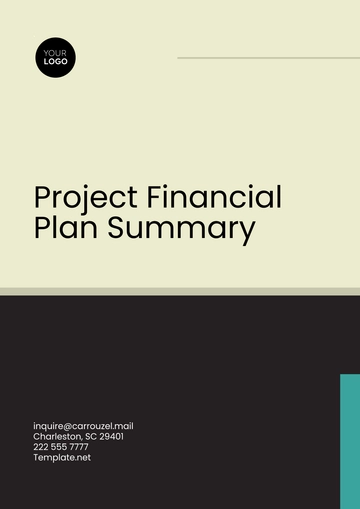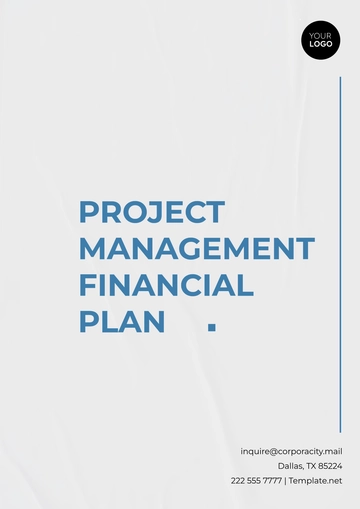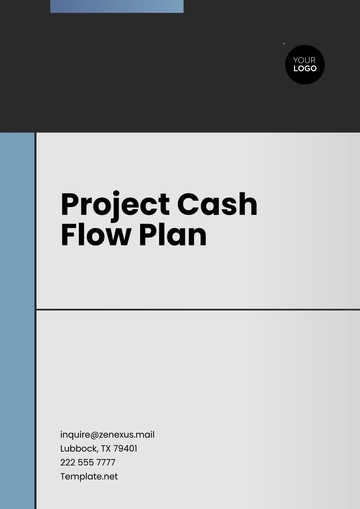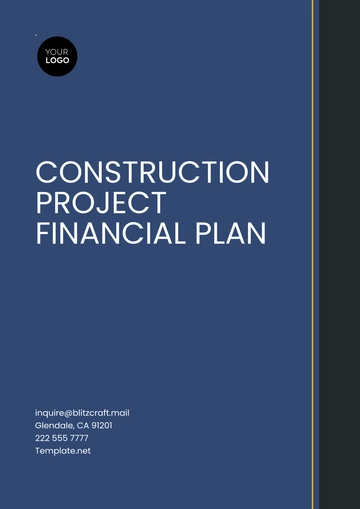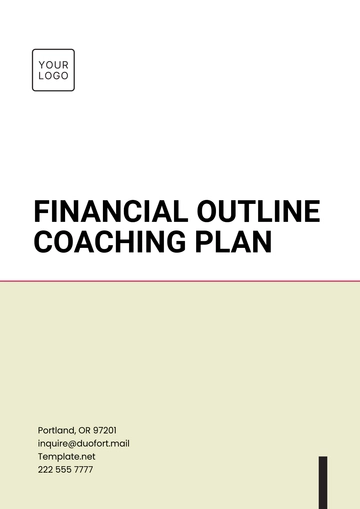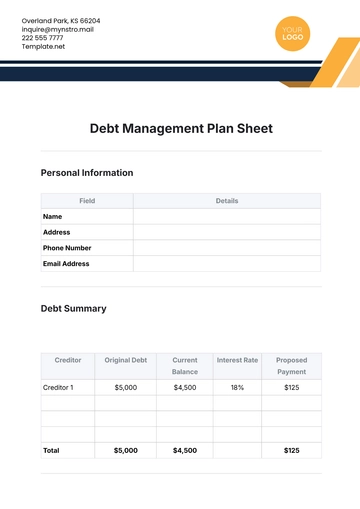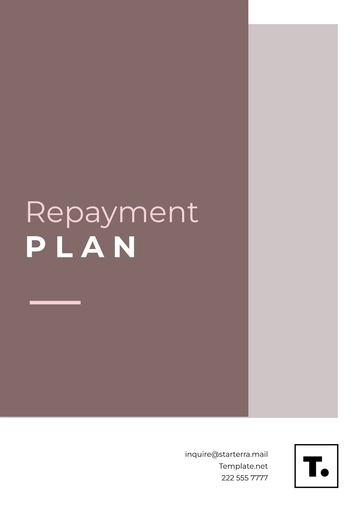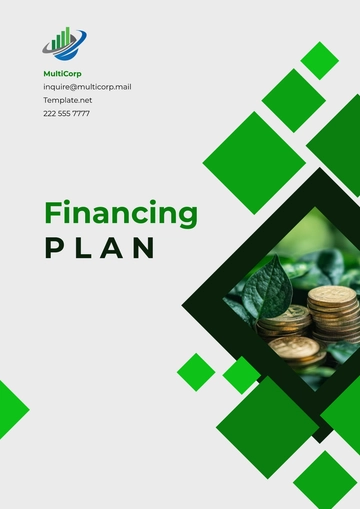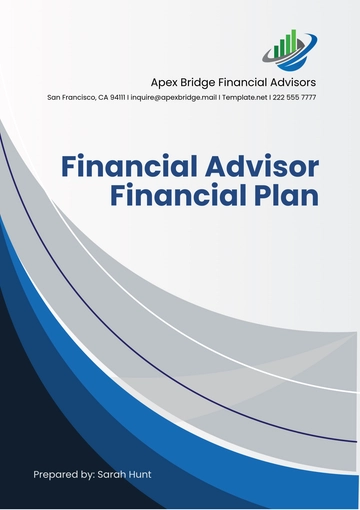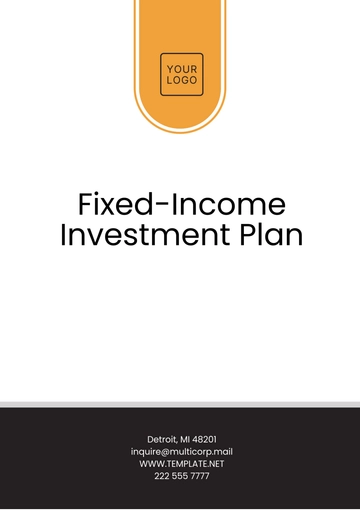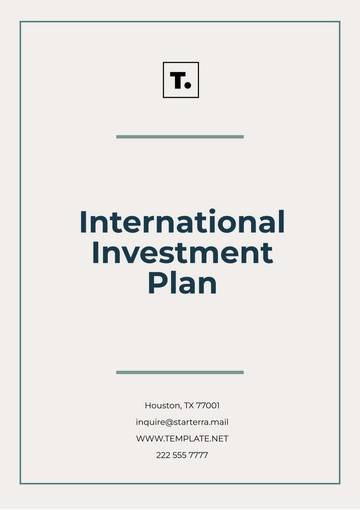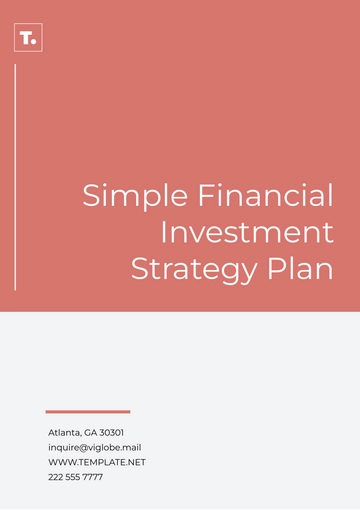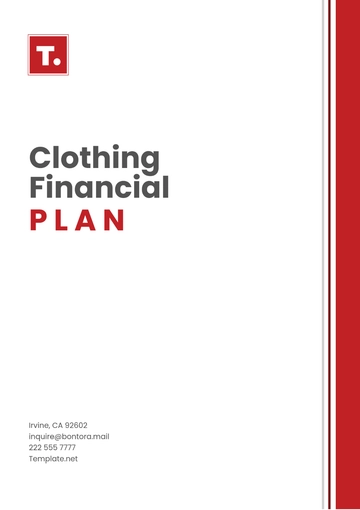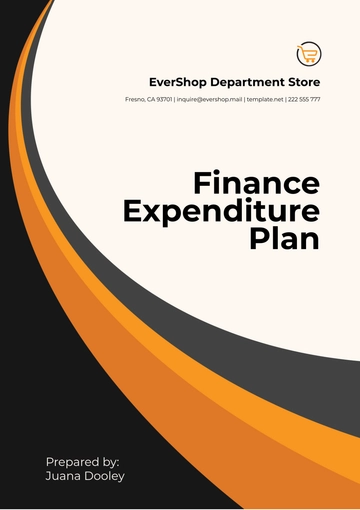Free Car Rental Procurement Plan

I. Executive Summary
This Procurement Plan of [Your Company Name] aims to outline a strategic approach to acquiring vehicles, services, and supplies necessary for our operations. This plan emphasizes the importance of cost-efficiency, quality, and sustainability in our procurement processes. By implementing a structured procurement strategy, we intend to enhance our service offerings, ensure customer satisfaction, and achieve our financial goals.
Key financial details include an allocated budget of $2,000,000 for vehicle procurement, with an additional $500,000 earmarked for maintenance and operational supplies. Our goal is to reduce procurement costs by 10% through strategic supplier partnerships and bulk purchasing agreements. This plan also focuses on integrating eco-friendly vehicles into our fleet to meet customer demand for sustainable transportation options.
In the next fiscal year, 2051 we aim to expand our fleet by 20%, enhance supplier relationships, and streamline procurement processes to improve efficiency. Regular reviews and updates to this plan will ensure alignment with market trends and company objectives. This document serves as a comprehensive guide for our procurement activities, supporting our mission to provide reliable and high-quality rental services.
II. Procurement Objectives
A. Cost Efficiency
Bulk Purchasing: Implement bulk purchasing agreements with suppliers to leverage volume discounts. This approach will help reduce unit costs and overall procurement expenses.
Negotiation Strategies: Develop strong negotiation strategies to secure favorable terms and conditions. Effective negotiation can lead to significant cost savings and better supplier relationships.
Supplier Evaluation: Regularly evaluate suppliers based on price, quality, and delivery performance. Continuous assessment ensures we get the best value for our expenditures.
Budget Management: Monitor and manage procurement budgets closely to avoid overspending. Regular budget reviews help identify areas for cost optimization.
Alternative Sourcing: Explore alternative sourcing options to mitigate risks and find cost-effective solutions. Diversifying suppliers can lead to competitive pricing and improved supply chain resilience.
Cost efficiency is a primary objective in our procurement plan. Bulk purchasing and strong negotiation strategies help reduce costs. Regular supplier evaluations and budget management ensure financial discipline. Exploring alternative sourcing options provides additional cost-saving opportunities.
B. Quality Assurance
Supplier Certification: Work with certified suppliers who meet industry standards. Certification ensures consistency in quality and reliability of supplies.
Quality Control Processes: Implement rigorous quality control processes to inspect and verify all procured items. Regular inspections help maintain high standards.
Performance Metrics: Develop performance metrics to assess supplier quality. Metrics such as defect rates and on-time delivery rates provide insights into supplier performance.
Customer Feedback: Incorporate customer feedback into quality assessments. Understanding customer experiences helps identify areas for improvement in our procurement.
Continuous Improvement: Foster a culture of continuous improvement by regularly reviewing and updating quality assurance practices. Ongoing improvement ensures we maintain high standards.
Quality assurance is crucial to our procurement strategy. Working with certified suppliers and implementing quality control processes ensure high standards. Performance metrics and customer feedback provide valuable insights for continuous improvement.
III. Supplier Selection
A. Criteria for Selection
Reputation: Evaluate suppliers based on their industry reputation and track record. A positive reputation indicates reliability and trustworthiness.
Financial Stability: Assess the financial stability of potential suppliers. Financially stable suppliers are more likely to meet long-term commitments.
Product Range: Consider suppliers with a comprehensive product range. A diverse product offering provides flexibility and convenience in procurement.
Service Levels: Evaluate the service levels provided by suppliers, including delivery times and customer support. High service levels enhance operational efficiency.
Sustainability Practices: Prioritize suppliers with strong sustainability practices. Sustainable suppliers align with our commitment to environmental responsibility.
The criteria for supplier selection ensure we partner with reliable and capable suppliers. Reputation and financial stability are key indicators of supplier reliability. A comprehensive product range and high service levels enhance operational efficiency. Sustainability practices align with our environmental goals.
B. Evaluation Process
Request for Proposal (RFP): Issue RFPs to potential suppliers to gather detailed information. RFPs provide a structured approach to evaluating supplier capabilities.
Scoring System: Develop a scoring system to objectively evaluate supplier proposals. Criteria such as cost, quality, and service levels are weighted and scored.
Site Visits: Conduct site visits to assess supplier facilities and operations. Site visits provide firsthand insights into supplier capabilities and practices.
References: Request and review references from other customers. References provide additional validation of supplier performance and reliability.
Trial Orders: Place trial orders to test supplier performance. Trial orders help evaluate product quality and delivery reliability before committing to long-term agreements.
The evaluation process ensures a thorough assessment of potential suppliers. RFPs and a scoring system provide a structured evaluation approach. Site visits, references, and trial orders offer additional validation of supplier capabilities.
IV. Procurement Process
A. Needs Assessment
Inventory Analysis: Conduct regular inventory analysis to determine procurement needs. Accurate inventory data ensures timely and appropriate procurement.
Demand Forecasting: Utilize demand forecasting to anticipate future needs. Forecasting helps align procurement with customer demand and market trends.
Stakeholder Input: Gather input from key stakeholders to identify procurement requirements. Collaboration with stakeholders ensures comprehensive needs assessment.
Budget Alignment: Ensure procurement needs align with budget allocations. Budget alignment prevents overspending and ensures financial discipline.
Market Research: Conduct market research to understand supply market dynamics. Research provides insights into pricing trends and availability.
Needs assessment is the first step in the procurement process. Inventory analysis and demand forecasting provide data-driven insights into procurement needs. Stakeholder input and budget alignment ensure comprehensive and financially disciplined procurement. Market research informs pricing and availability decisions.
B. Procurement Planning
Procurement Schedule: Develop a procurement schedule outlining key milestones. A well-planned schedule ensures timely procurement and minimizes disruptions.
Supplier Engagement: Engage suppliers early in the planning process. Early engagement fosters collaboration and better alignment of expectations.
Risk Management: Identify and mitigate procurement risks. Risk management strategies ensure continuity and resilience in the supply chain.
Resource Allocation: Allocate resources effectively to support procurement activities. Adequate resources ensure smooth execution of the procurement plan.
Performance Metrics: Establish performance metrics to monitor procurement activities. Metrics provide insights into efficiency and effectiveness.
Procurement planning is essential for organized and efficient procurement. A detailed procurement schedule and early supplier engagement ensure timely and collaborative procurement. Risk management and resource allocation support smooth execution. Performance metrics guide continuous improvement.
V. Contract Management
A. Contract Negotiation
Term Definition: Clearly define contract terms and conditions. Well-defined terms prevent misunderstandings and disputes.
Pricing Structures: Negotiate favorable pricing structures, including discounts and payment terms. Competitive pricing structures reduce procurement costs.
Service Level Agreements (SLAs): Include SLAs to ensure supplier performance meets expectations. SLAs define performance standards and accountability.
Compliance Requirements: Ensure contracts comply with legal and regulatory requirements. Compliance prevents legal issues and ensures ethical practices.
Review and Approval: Implement a thorough review and approval process for contracts. Multiple review stages ensure accuracy and completeness.
Effective contract negotiation is crucial for successful procurement. Well-defined terms, competitive pricing structures, and SLAs ensure clarity and accountability. Compliance with legal requirements and a thorough review process prevent issues and ensure accuracy.
B. Contract Execution
Implementation Plan: Develop an implementation plan for contract execution. A detailed plan outlines steps and responsibilities for smooth execution.
Communication Protocols: Establish communication protocols for ongoing contract management. Clear communication ensures timely issue resolution and collaboration.
Performance Monitoring: Monitor supplier performance against contract terms. Regular monitoring ensures compliance and identifies areas for improvement.
Issue Resolution: Implement processes for resolving contract-related issues. Effective issue resolution maintains positive supplier relationships.
Contract Renewal: Plan for contract renewal or termination. Timely renewal or termination decisions ensure continuity or transition.
Contract execution involves detailed planning and communication. An implementation plan and communication protocols ensure smooth execution. Performance monitoring and issue resolution maintain contract compliance and positive supplier relationships. Planning for contract renewal or termination ensures continuity or transition.
VI. Risk Management
A. Risk Identification
Supplier Risks: Identify risks related to supplier performance and reliability. Understanding supplier risks helps develop mitigation strategies.
Market Risks: Assess risks related to market fluctuations and supply availability. Market risk assessment informs procurement decisions.
Operational Risks: Identify risks related to internal operations and processes. Operational risk assessment ensures smooth procurement activities.
Compliance Risks: Evaluate risks related to legal and regulatory compliance. Compliance risk assessment prevents legal issues and ensures ethical practices.
Financial Risks: Assess financial risks, including budget overruns and cost fluctuations. Financial risk assessment supports financial stability.
Risk identification is the first step in effective risk management. Assessing supplier, market, operational, compliance, and financial risks provides a comprehensive understanding of potential challenges. Understanding these risks helps develop appropriate mitigation strategies.
B. Risk Mitigation
Supplier Diversification: Diversify suppliers to reduce dependency on a single source. Supplier diversification enhances supply chain resilience.
Contingency Planning: Develop contingency plans for potential disruptions. Contingency planning ensures continuity and minimizes impact.
Compliance Audits: Conduct regular compliance audits to ensure adherence to legal and regulatory requirements. Audits prevent compliance issues and ensure ethical practices.
Insurance Coverage: Obtain appropriate insurance coverage to mitigate financial risks. Insurance provides financial protection against unforeseen events.
Regular Reviews: Conduct regular risk reviews to identify new risks and assess mitigation effectiveness. Ongoing reviews ensure proactive risk management.
Risk mitigation involves strategic actions to minimize potential impacts. Supplier diversification and contingency planning enhance resilience. Compliance audits and insurance coverage provide protection against legal and financial risks. Regular reviews ensure ongoing risk management.
VII. Sustainability Practices
A. Eco-friendly Vehicles
Hybrid and Electric Vehicles: Integrate hybrid and electric vehicles into our fleet. These vehicles reduce carbon emissions and align with sustainability goals.
Fuel Efficiency Standards: Set fuel efficiency standards for all procured vehicles. Fuel-efficient vehicles lower operating costs and environmental impact.
Sustainable Sourcing: Source vehicles from manufacturers with strong sustainability practices. Sustainable sourcing supports our environmental responsibility.
Customer Awareness: Educate customers about the benefits of eco-friendly vehicles. Promoting sustainability options enhances customer satisfaction.
Incentive Programs: Implement incentive programs for customers who choose eco-friendly vehicles. Incentives encourage sustainable choices and loyalty.
Sustainability practices are integral to our procurement plan. Integrating hybrid and electric vehicles reduces emissions. Fuel efficiency standards and sustainable sourcing support environmental goals. Educating customers and offering incentives promote sustainable choices.
B. Waste Reduction
The following table outlines our waste reduction strategies and their expected outcomes:
Strategy | Expected Outcome |
|---|---|
Recycling Programs | Reduced landfill waste, increased recycling rates |
Supplier Collaboration | Lower packaging waste, enhanced sustainability efforts |
Digital Documentation | Reduced paper usage, improved operational efficiency |
Waste Audits | Identification of reduction opportunities, actionable insights |
Recycling Programs: Recycling programs are essential for reducing landfill waste and increasing recycling rates. By implementing these programs, we aim to divert a significant portion of waste from landfills, contributing to environmental sustainability.
Supplier Collaboration: Collaborating with suppliers to minimize packaging waste enhances our overall sustainability efforts. This joint initiative not only reduces waste but also strengthens our relationships with suppliers who share our commitment to sustainability.
Digital Documentation: Transitioning to digital documentation reduces paper usage and improves operational efficiency. Digital processes streamline our operations, making them more environmentally friendly and cost-effective.
Waste Audits: Regular waste audits provide valuable insights into waste patterns and areas for improvement. By identifying opportunities for waste reduction, we can implement targeted strategies that enhance our sustainability practices.
Implementing these waste reduction strategies demonstrates our commitment to sustainability and operational efficiency. By focusing on recycling, supplier collaboration, digital processes, and waste audits, we aim to minimize our environmental impact and promote responsible resource management. These efforts not only benefit the environment but also align with customer expectations for eco-friendly practices.
VIII. Financial Management
A. Budget Allocation
The following chart and table present the budget allocation for different procurement categories for the fiscal year 2051:
Procurement Category | Budget Allocation |
|---|---|
Vehicle Procurement | $2,000,000 |
Maintenance and Repairs | $300,000 |
Operational Supplies | $200,000 |
Sustainability Initiatives | $150,000 |
Contingency Fund | $100,000 |
Total | $2,750,000 |
Vehicle Procurement: With an allocation of $2,000,000, vehicle procurement is our top priority. This budget supports the acquisition of new vehicles to expand our fleet and replace older models, ensuring we meet customer demand and maintain a competitive edge.
Maintenance and Repairs: The $300,000 allocated for maintenance and repairs is crucial for keeping our vehicles in optimal condition. Regular maintenance ensures safety, reliability, and longevity of our fleet, reducing downtime and operational costs.
Operational Supplies: Allocating $200,000 for operational supplies ensures we have the necessary resources for daily operations. This includes office supplies, vehicle accessories, and other essential items that support our business activities.
Sustainability Initiatives: A budget of $150,000 for sustainability initiatives reflects our commitment to environmental responsibility. These funds support the integration of eco-friendly vehicles, waste reduction programs, and other sustainability efforts.
Contingency Fund: The $100,000 contingency fund provides financial flexibility to address unexpected expenses. This reserve ensures we can respond promptly to unforeseen challenges without impacting our planned budget.
Our budget allocation reflects strategic priorities aimed at expanding our fleet, maintaining operational efficiency, and promoting sustainability. The substantial investment in vehicle procurement aligns with our growth objectives, while funds allocated for maintenance and operational supplies ensure smooth operations. The commitment to sustainability is evident in the dedicated budget for eco-friendly initiatives. The contingency fund provides a safety net, ensuring financial stability in the face of unexpected challenges.
B. Cost Control
Expense Monitoring: Implement regular monitoring of expenses to ensure adherence to budget allocations. This involves tracking expenditures and identifying any deviations from the planned budget.
Supplier Agreements: Negotiate long-term agreements with suppliers to secure stable pricing. These agreements help manage costs and prevent price fluctuations.
Process Optimization: Optimize procurement processes to reduce inefficiencies and lower costs. Streamlining workflows and eliminating redundancies enhance cost control.
Financial Reviews: Conduct periodic financial reviews to assess spending patterns. Regular reviews provide insights into areas where cost-saving measures can be implemented.
Technology Integration: Utilize technology to automate procurement processes. Automation reduces manual effort, minimizes errors, and enhances cost efficiency.
Effective cost control measures are essential for maintaining financial discipline. Regular expense monitoring ensures adherence to budget allocations. Negotiating long-term supplier agreements stabilizes pricing and prevents cost fluctuations. Process optimization and financial reviews identify areas for cost-saving measures. Technology integration enhances efficiency and reduces costs.
IX. Conclusion and Next Steps
A. Conclusion
This Procurement Plan of [Your Company Name] outlines a comprehensive approach to acquiring vehicles, services, and supplies necessary for our operations. By focusing on cost efficiency, quality assurance, and sustainability, we aim to enhance our service offerings and achieve our financial goals. The detailed strategies and processes outlined in this plan provide a structured framework for our procurement activities.
This plan emphasizes the importance of strategic supplier partnerships, rigorous risk management, and continuous improvement. By integrating these elements into our procurement practices, we ensure operational efficiency and alignment with our company’s mission and values. Regular reviews and updates to this plan will ensure it remains relevant and effective in the face of changing market conditions.
B. Next Steps
The following steps outline the immediate actions required to implement the Procurement Plan:
Finalize Supplier Agreements: Secure long-term agreements with key suppliers. These agreements will stabilize pricing and ensure a reliable supply of vehicles and services.
Implement Monitoring Systems: Establish systems for regular monitoring of expenses and supplier performance. These systems will provide real-time insights into procurement activities and identify areas for improvement.
Conduct Training Sessions: Organize training sessions for procurement staff on new processes and systems. Training will ensure staff are well-equipped to execute the procurement plan effectively.
Launch Sustainability Initiatives: Begin implementing the sustainability initiatives outlined in the plan. This includes integrating eco-friendly vehicles into our fleet and launching waste reduction programs.
Implementing these next steps will ensure the successful execution of our procurement plan. Finalizing supplier agreements and implementing monitoring systems provide a strong foundation for effective procurement. Training sessions and sustainability initiatives support our operational and environmental goals.
- 100% Customizable, free editor
- Access 1 Million+ Templates, photo’s & graphics
- Download or share as a template
- Click and replace photos, graphics, text, backgrounds
- Resize, crop, AI write & more
- Access advanced editor
Streamline procurement processes with the Car Rental Procurement Plan Template available on Template.net! This customizable template helps you outline procurement strategies and processes. The editable format allows for easy adjustments to suit your business needs. Utilize the AI Editor Tool to create an efficient procurement plan that supports your operations!
You may also like
- Finance Plan
- Construction Plan
- Sales Plan
- Development Plan
- Career Plan
- Budget Plan
- HR Plan
- Education Plan
- Transition Plan
- Work Plan
- Training Plan
- Communication Plan
- Operation Plan
- Health And Safety Plan
- Strategy Plan
- Professional Development Plan
- Advertising Plan
- Risk Management Plan
- Restaurant Plan
- School Plan
- Nursing Home Patient Care Plan
- Nursing Care Plan
- Plan Event
- Startup Plan
- Social Media Plan
- Staffing Plan
- Annual Plan
- Content Plan
- Payment Plan
- Implementation Plan
- Hotel Plan
- Workout Plan
- Accounting Plan
- Campaign Plan
- Essay Plan
- 30 60 90 Day Plan
- Research Plan
- Recruitment Plan
- 90 Day Plan
- Quarterly Plan
- Emergency Plan
- 5 Year Plan
- Gym Plan
- Personal Plan
- IT and Software Plan
- Treatment Plan
- Real Estate Plan
- Law Firm Plan
- Healthcare Plan
- Improvement Plan
- Media Plan
- 5 Year Business Plan
- Learning Plan
- Marketing Campaign Plan
- Travel Agency Plan
- Cleaning Services Plan
- Interior Design Plan
- Performance Plan
- PR Plan
- Birth Plan
- Life Plan
- SEO Plan
- Disaster Recovery Plan
- Continuity Plan
- Launch Plan
- Legal Plan
- Behavior Plan
- Performance Improvement Plan
- Salon Plan
- Security Plan
- Security Management Plan
- Employee Development Plan
- Quality Plan
- Service Improvement Plan
- Growth Plan
- Incident Response Plan
- Basketball Plan
- Emergency Action Plan
- Product Launch Plan
- Spa Plan
- Employee Training Plan
- Data Analysis Plan
- Employee Action Plan
- Territory Plan
- Audit Plan
- Classroom Plan
- Activity Plan
- Parenting Plan
- Care Plan
- Project Execution Plan
- Exercise Plan
- Internship Plan
- Software Development Plan
- Continuous Improvement Plan
- Leave Plan
- 90 Day Sales Plan
- Advertising Agency Plan
- Employee Transition Plan
- Smart Action Plan
- Workplace Safety Plan
- Behavior Change Plan
- Contingency Plan
- Continuity of Operations Plan
- Health Plan
- Quality Control Plan
- Self Plan
- Sports Development Plan
- Change Management Plan
- Ecommerce Plan
- Personal Financial Plan
- Process Improvement Plan
- 30-60-90 Day Sales Plan
- Crisis Management Plan
- Engagement Plan
- Execution Plan
- Pandemic Plan
- Quality Assurance Plan
- Service Continuity Plan
- Agile Project Plan
- Fundraising Plan
- Job Transition Plan
- Asset Maintenance Plan
- Maintenance Plan
- Software Test Plan
- Staff Training and Development Plan
- 3 Year Plan
- Brand Activation Plan
- Release Plan
- Resource Plan
- Risk Mitigation Plan
- Teacher Plan
- 30 60 90 Day Plan for New Manager
- Food Safety Plan
- Food Truck Plan
- Hiring Plan
- Quality Management Plan
- Wellness Plan
- Behavior Intervention Plan
- Bonus Plan
- Investment Plan
- Maternity Leave Plan
- Pandemic Response Plan
- Succession Planning
- Coaching Plan
- Configuration Management Plan
- Remote Work Plan
- Self Care Plan
- Teaching Plan
- 100-Day Plan
- HACCP Plan
- Student Plan
- Sustainability Plan
- 30 60 90 Day Plan for Interview
- Access Plan
- Site Specific Safety Plan

